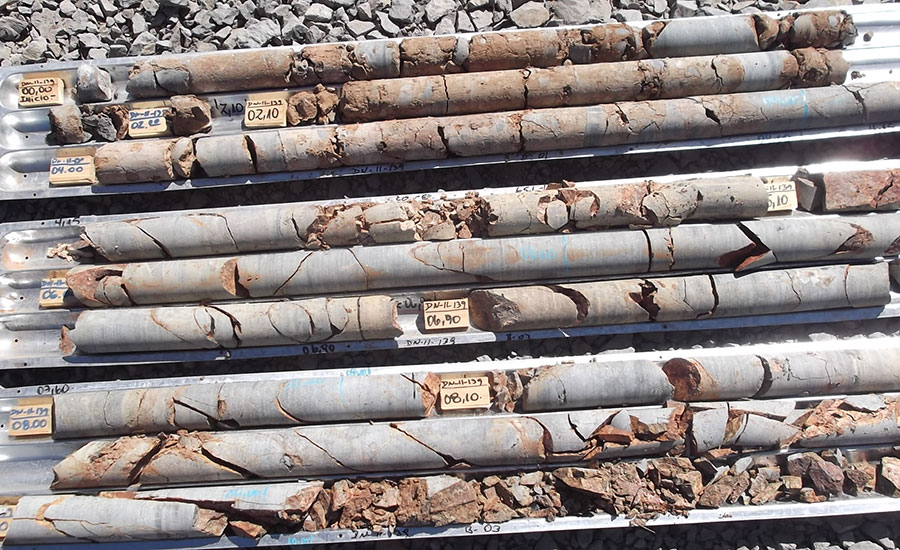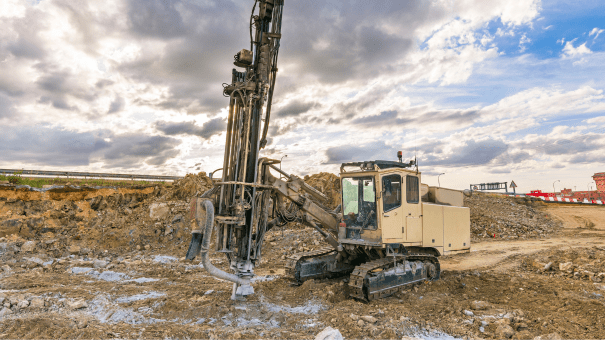An Extensive Summary of Geotechnical Engineering Techniques and Their Influence On Modern Civil Engineering Projects
Geotechnical design serves as the backbone of contemporary civil design, providing important techniques that resolve the complexities of subsurface problems. The interaction of soil evaluation, foundation style, and ingenious technologies shapes the honesty and sustainability of facilities tasks.
Significance of Geotechnical Design
Geotechnical engineering works as an essential foundation for civil design projects, influencing the security and stability of frameworks. This technique concentrates on the habits of soil and rock products, providing necessary insights that lead the layout and building and construction procedures. By understanding the communication in between the planet and crafted structures, geotechnical designers can evaluate threats related to ground conditions, such as negotiation, incline stability, and liquefaction.
The value of geotechnical design extends beyond mere structural integrity; it plays a vital duty in environmental management and sustainability. Properly executed geotechnical evaluations guarantee that jobs lessen their eco-friendly footprint and abide by regulatory requirements (all about geotechnical engineering). Moreover, geotechnical engineering contributes in website choice, allowing engineers to determine ideal places for construction that minimize possible threats.
Furthermore, geotechnical design cultivates development in civil design by advancing techniques for ground improvement, structure layout, and excavation. The self-control's payments are essential in addressing obstacles presented by varying dirt conditions, thus assisting in reliable and secure framework development. Overall, the relevance of geotechnical engineering is critical in making sure that civil engineering tasks are not only feasible but likewise resistant against man-made and all-natural hardships.
Trick Strategies in Geotechnical Design

One more important technique is soil stablizing, which involves modifying soil buildings to improve load-bearing capability or reduce settlement. Techniques such as adding cement, lime, or making use of geosynthetics are commonly used to accomplish dirt renovation.
Ground renovation techniques, consisting of dynamic compaction and vibro-replacement, are additionally essential. These approaches aim to compress loosened or soft dirts, enhancing their stamina and minimizing liquefaction potential in seismic locations.
Maintaining structures, such as sheet stacks and soil nailing, are employed to support excavations and prevent soil motion. Furthermore, incline stablizing techniques, consisting of water drainage systems and maintaining walls, are necessary for reducing landslide risks.

Dirt Evaluation and Testing Approaches
Effective dirt evaluation and screening methods are important for comprehending the physical and chemical residential or commercial properties of soil, which directly influence design decisions. A comprehensive analysis of soil qualities is essential for predicting habits under numerous loading conditions and ecological impacts.
Typical soil screening methods include both area and research laboratory techniques. Field tests, such as the Requirement Infiltration Test (SPT) and Cone Infiltration Examination (CPT), provide instant insights right into soil stratification, toughness, and density. These tests assist engineers analyze website problems efficiently prior to even more substantial laboratory analyses.
Laboratory screening approaches, such as Atterberg limits, grain dimension distribution, and compaction examinations, are important for figuring out soil plasticity, wetness web content, and optimum compaction levels. Progressed strategies like triaxial examinations and consolidated undrained (CU) examinations supply important data on shear stamina and effective tension criteria.
Chemical testing, consisting of pH, electrical conductivity, and natural content evaluation, is additionally crucial for understanding potential soil contamination and its effect on building and construction materials. Jointly, these soil analysis and screening techniques create the structure of educated decision-making in geotechnical design, guaranteeing the safety and security and stability of contemporary civil design tasks.
Foundation Design Approaches
Structure style methods are critical in guaranteeing the stability and long life of frameworks. These strategies can be classified into shallow and deep structures, each fit to particular soil problems and loading situations. Shallow structures, such as spread grounds and mat foundations, are typically used when surface area dirts have sufficient bearing capacity. They disperse the tons over a larger location, lessening settlement risks.
On the other hand, deep foundations, consisting of stacks and drilled shafts, are utilized when surface dirts are weak or inadequate read this for sustaining the structure. These structures transfer tons to much deeper, a lot more stable dirt or rock layers, making them important for skyscrapers and bridges in challenging geotechnical conditions.
Picking the proper structure style includes complete geotechnical investigations, consisting of dirt structure, birthing capacity, and groundwater problems. Designers should take into consideration factors such as settlement, side loads, and prospective seismic task to make certain the structure's efficiency over time.
Ultimately, a well-executed foundation style is a crucial aspect of civil engineering, straight influencing the security, longevity, and functionality of structures. geotechnical companies in south africa. By straightening structure kinds with site-specific conditions, engineers can effectively mitigate threats associated with foundation failure
Advancements Shaping Civil Engineering

Sustainable materials, such as high-performance concrete and recycled accumulations, are also getting grip, promoting environmentally friendly practices while maintaining structural stability. In addition, progressed geotechnical techniques, such as ground renovation and deep blending methods, are improving the stability of foundations in difficult soil conditions.
Additionally, using drones and remote picking up technology is enhancing site checking and evaluating, giving real-time information that help in managing construction progress and safety. The implementation of innovative building and construction approaches, such as premade and modular building and construction, better expedites job timelines and decreases waste. Collectively, these innovations are not just changing civil design methods yet visit homepage likewise ensuring that modern facilities satisfies the demands of a growing international populace while attending to ecological problems.
Verdict
To conclude, geotechnical engineering techniques are integral to the success of modern-day civil design jobs. The application of site investigation, dirt stabilization, and ground improvement techniques makes certain the security and stability of framework. Advancements such as Building Details Modeling (BIM) and progressed tracking technologies better improve project effectiveness and accuracy. By employing these methods, engineers can minimize dangers and add to the development of resistant metropolitan settings, eventually cultivating sustainable development and safety site link in civil design techniques.
Geotechnical design offers as the backbone of contemporary civil design, providing crucial techniques that attend to the intricacies of subsurface conditions.Geotechnical engineering serves as a crucial foundation for civil design projects, influencing the security and security of frameworks.In enhancement, geotechnical engineering fosters advancement in civil design by progressing techniques for ground enhancement, structure layout, and excavation. Generally, the significance of geotechnical engineering is critical in making certain that civil design projects are not only possible however also durable against all-natural and manufactured misfortunes.
In final thought, geotechnical engineering methods are indispensable to the success of modern-day civil design tasks.